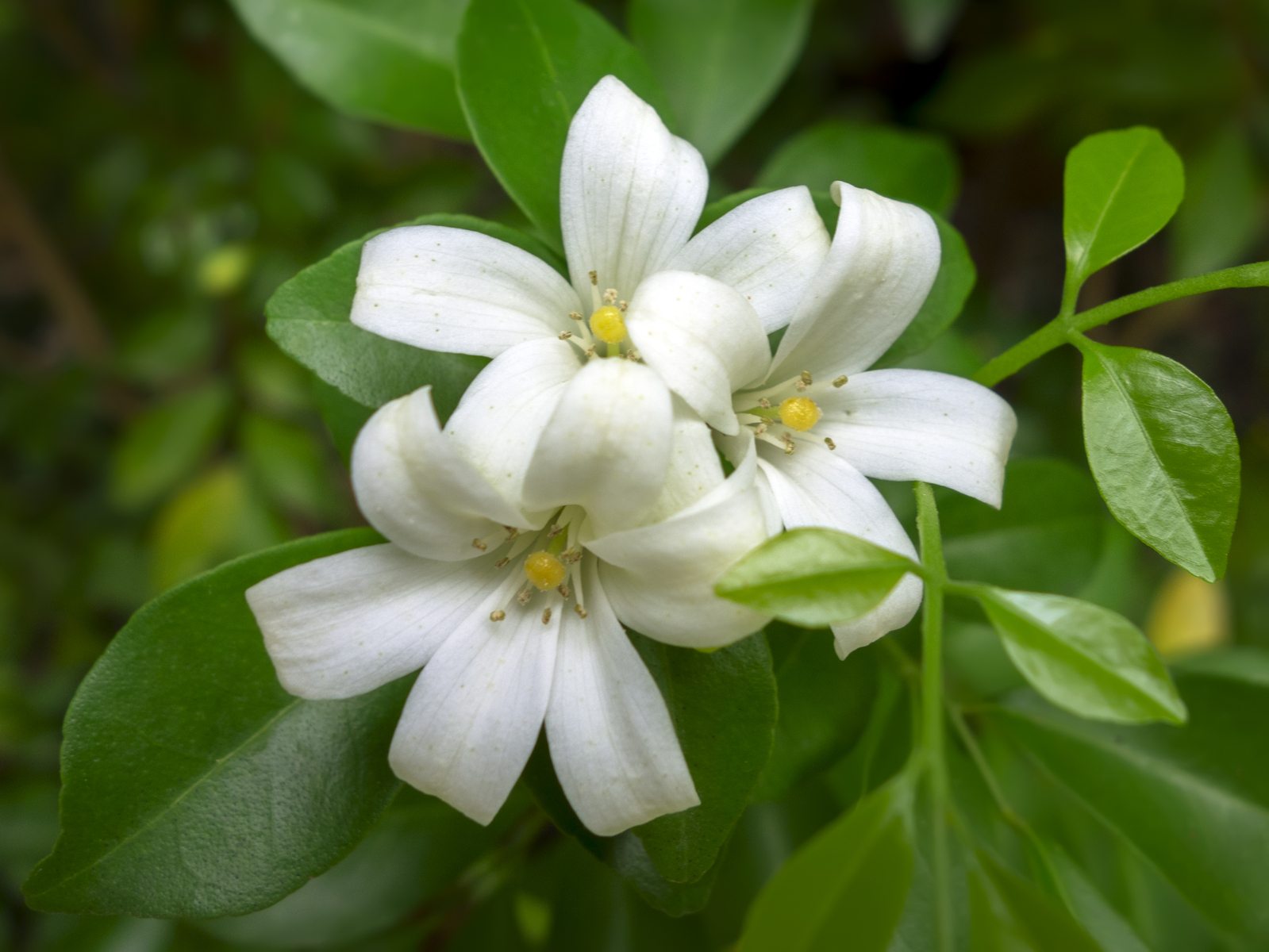What Is Orange Jasmine: Learn About Orange Jasmine Care


What is orange jasmine? Also known as orange Jessamine, mock orange, or satinwood, orange jasmine (Murraya paniculata) is a compact evergreen shrub with shiny, deep green leaves and interesting, gnarled branches. Clusters of small, fragrant flowers bloom in spring, followed by bright reddish orange berries in summer. This lovely plant is a great choice if you’re looking to attract bees, birds, or butterflies to your garden. Caring for Murraya orange jasmine is surprisingly simple. Read on to find out more about orange jasmine plants.
Orange Jasmine Growing Conditions
Orange jasmine plants require protection from hot, direct sunlight. When growing Murraya orange jasmine, locate the plant where it receives morning sunlight and afternoon shade, or alternatively, where it is in broken sunlight or dappled shade all day. Well-drained soil is critical, as orange jasmine doesn’t do well in waterlogged soil. If your soil lacks drainage, improve soil conditions by digging in organic material such as compost, chopped bark, or leaf mulch.
Orange Jasmine Care
Water orange jasmine plants deeply whenever the top 2 inches (5 cm.) of soil feels dry to the touch. As a general rule, once per week is about right. However, more frequent irrigation may be needed if you live in a hot climate, or if the orange jasmine plant is in a container. Never allow the plant to stand in muddy soil or water. Feed orange jasmine plants once every three to four weeks throughout the growing season using a fertilizer manufactured for evergreen plants. Alternatively, if the plant is in a container, apply a balanced, water-soluble fertilizer. Trim orange jasmine plants lightly as needed to maintain the desired size and shape. Remove dead or damaged growth, and thin out branches that cross or rub against other branches. Avoid harsh pruning: it’s best not to remove more than one-eighth of the shrub’s total growth per year.
Sign up for the Gardening Know How newsletter today and receive a free copy of our e-book "How to Grow Delicious Tomatoes".

A Credentialed Garden Writer, Mary H. Dyer was with Gardening Know How in the very beginning, publishing articles as early as 2007.